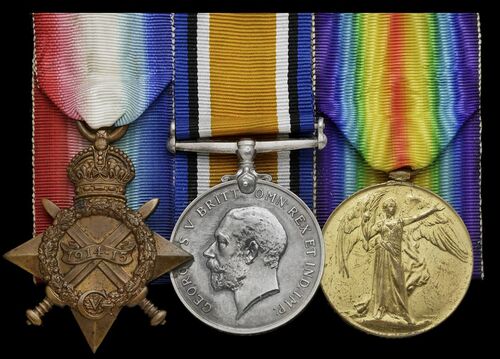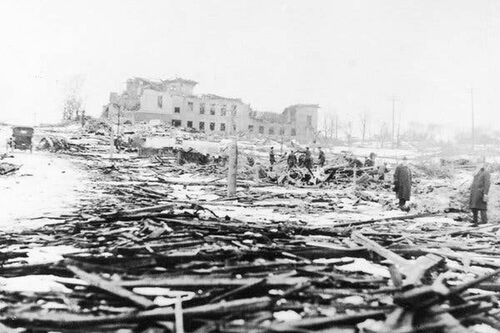Auction: 23001 - Orders, Decorations and Medals
Lot: 107
The campaign group of three awarded to Chief Gunner F. Isaac, Royal Navy, who was commended for his impressive rescue work after the devastating Halifax Explosion of December 1917
1914-15 Star (Ch. Gnr. F. Isaac, R.N.); British War and Victory Medals (Ch. Gnr. F. Isaac, R.N.), good very fine (3)
Ex-R. C. Witte Collection, DNW.
Frederick Isaac was born in Bishopston, Sussex in December 1868, the son of John Golding Isaac, a veteran of the Baltic operations and a Commissioned Boatman in the Coast Guard. Entering the Royal Navy as a Boy Second Class in June 1884, he was advanced to Petty Officer First Class in the cruiser H.M.S. Australia in March 1892 and was appointed a Gunner, R.N., in November 1898.
By the outbreak of hostilities in August 1914, Isaac was serving as a recently-promoted Chief Gunner in torpedo boat destroyer 85, and he remained similarly employed until removing to the armed merchant cruiser Changuinola in May 1915. It was in this latter capacity that he won an endorsement on his service record ‘...for showing great ability in rescue work’ following the infamous Halifax explosion on 6 December 1917, when Changuinola landed a party of seamen and marines to assist in the rescue operations ashore:
‘Many badly injured were pulled from under houses which had collapsed and I am sorry to say a few had to be abandoned as the houses crashed down in flames. There was no available means of extinguishing the flames... Motor-cars were commandeered and the wounded sent to hospital. In the meantime, the military had arrived on the scene’ (report by Lieutenant H. Percival, R.N.R., H.M.S. Changuinola refers).
The aftershocks of the explosion are still felt in Canada today and it is no surprise: the disaster left some 1,782 dead, around 9,000 were injured, 6,000 became homeless and around 25,000 had insufficient shelter in the depths of winter. The Explosion was one of the largest artificial non-nuclear explosions in history. An extensive comparison of 130 major explosions by Halifax historian Jay White in 1994 concluded that it:
'...remains unchallenged in overall magnitude as long as five criteria are considered together: number of casualties, force of blast, radius of devastation, quantity of explosive material, and total value of property destroyed.'
For many years afterward, the Halifax Explosion was the standard by which all large blasts were measured. For instance, in its report on the atomic bombing of Hiroshima, Time magazine wrote that the explosive power of the Little Boy bomb was seven times that of the Halifax Explosion. Numerous books, televison documentaries and films have also been produced to tell this remarkable tale.
Sadly, Isaac died suddenly on 30 January 1919, aged 50 years, while still serving in the Changuinola. He was buried in Portsmouth (Kingston) Cemetery.
For the Medal of his brother, please see Lot 454.
Subject to 20% VAT on Buyer’s Premium. For more information please view Terms and Conditions for Buyers.
Sold for
£320
Starting price
£200







